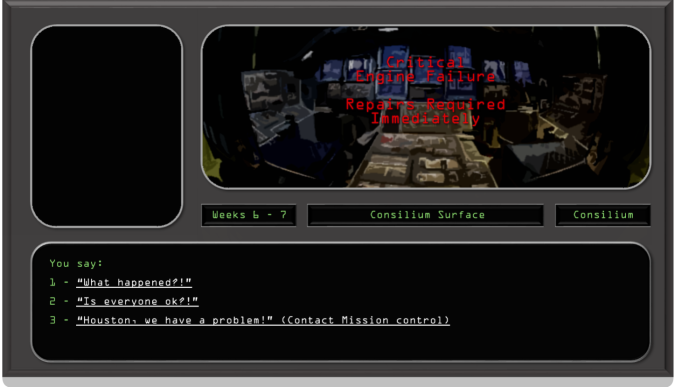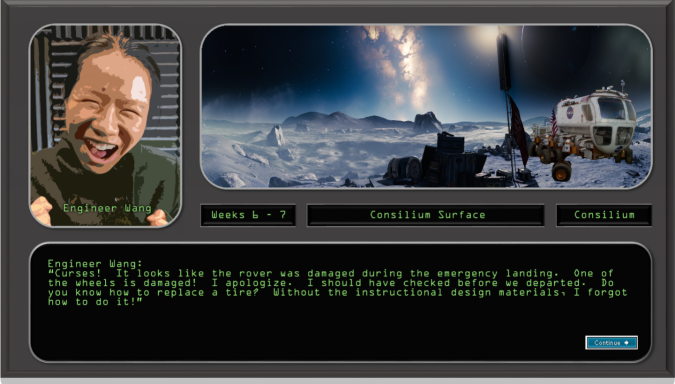
Badge earned in Instructional Design
As a part of my Masters program, I am taking a class in Instructional Design that is gamified. About two weeks into the class, I realized that I am 100% the target audience for gamification. I’m a very competitive person, and this Masters program has made me realize how much of a perfectionist I am as well. When I saw my avatar in first place on the leaderboard, I grinned for days. I texted my mom, my friends, even my department head to tell them that I was in first place.
Gamification is one of those edtech buzzwords that has been floating around in the peripheral of my educational experience. I’ve heard of it, but I hadn’t really seen it done.
Now that I’m experiencing it, I’m in love.
Now, when I say that I’m the target audience for gamification, I don’t mean that I need it to motivate me. I’m a naturally good student. I would be a crying mess under my desk if I earned anything less than an A. I remember crying my eyes out coming home from school in 7th grade with a C in math on my report card. Obviously, I failed. I would never accomplish my goals because I could not pass math (just to clarify, a C was definitely still passing; I was a melodramatic child). I will never forget how upset I was. Or my mom trying not to laugh at me as she explained that the world was not, in fact, over.
I am what I like to call an academic masochist. Even my undergraduate honors adviser agreed with that self-assessment. I thrive on challenges. During my second undergraduate semester, three of my five classes were Honors level – meaning that they each required a research project of approximately ten pages that were, of course, all due in the same week. I came out of that semester with a 3.9 GPA on a 4.0 scale. I have a firm belief that if I’m not overwhelmed, I’m not working hard enough. Some people might call me a workaholic, but I like my term better.
To sum up that bit of self-reflection, I am already a motivated student. So why does gamification work so well on me? And then the million dollar question: how can I turn this around so that it will work this well on my students?
When it comes to my Instructional Design class, gamification adds interest and fun. The textbook is dry (don’t get me wrong, it’s great information and I can tell it’s already positively affecting the way I design my lessons, but it’s certainly not an engaging read). But every other week, I get to click through the video game portion of the class – a space travel metaphor in which I am a space captain tracking down another captain who stole all of the instructional materials from Earth. I get to fly to other planets in search of the evil Captain Beltran with my crew of officers.
It’s silly. It is totally 100% ridiculous. I love it. I laugh out loud at least once each time I complete a portion of the game.

I literally rolled my eyes when I saw “Houston, we have a problem!” as an option. Love it!

Seriously, this is my favorite class.
Aside from adding an element of fun and hilarity, this gamified aspect of the course shows me something that students don’t normally get to see and I know my own students don’t often appreciate: effort on the part of the instructor. The two professors in charge of this course have clearly put hours upon hours of effort into gamifying this class with help from a couple of graduate students. They’ve recorded voices for the video game portion, taken pictures to include, recorded videos to send updates and information to the “crew,” not to mention however much time had to go into putting together the video game itself, with all the dialogue and options and puzzles. This is all effort above and beyond what is strictly necessary for us to understand the material. It gives us an easy entry point to difficult information and makes the class more entertaining, not to mention the fact that I can almost guarantee I will remember what I’m learning in this class better than any other, just from being able to associate what I learned in each module with each planet and part of the storyline.
From what I’ve experienced in the past 7 weeks, I can say that gamification has three key benefits: motivation, fun, and memory.
Motivation: Even students who are already intrinsically motivated will find themselves pushing harder to get first place. I teach high school freshmen. They are not intrinsically motivated. At all. I’ve written many posts now about my efforts to get them motivated and active, from QR Codes to my Persuasion Matchup activity to using technology as simple as Paint.
Fun: Students love video games. Adults love video games. Even if you’ve never played a Playstation or Xbox game, I’m sure you’ve played Farmville or Fruit Ninja or Candy Crush. Games are fun. Take a boring subject, add a game, you’ve got instant fun. I’ve been working hard the past couple of weeks to make all of this STAAR prep a little more fun, mostly in the form of using interactive online quizzing.
Memory: Games give the brain something to latch on to. They get kids involved, engaged, and interested in the learning, which means they’re more likely to retain that learning. Just about everything I’ve posted about what’s happening in my classroom has the central focus of Student Engagement for this very reason.
I’ve learned a lot this semester from my graduate classes, from the new tools and strategies I’ve been trying in the classroom, and from reflecting on all of it through this blog. We still have 87 days until the end of the school year (not that anyone’s counting), and I plan to learn a whole lot more before then. That starts with this idea of gamification.
My students will take their STAAR test about a week after they come back from Spring Break (in 9 school days, not that anyone’s counting). My tradition after STAAR is do what I call the “fun stuff” which means SHAKESPEARE.
This year, like last, we will be reading my favorite play, Much Ado About Nothing.
But, this year will be different.
This year will be gamified.
I’m not going to lie, even just writing that down is scary. Attempting such a new idea with already difficult content is risky, and I’m nervous. I even preordered a whole book called Gamify Literacy from ISTE, but it’s not set to release until April (so excited!).
I haven’t worked out the details yet (feel free to comment suggestions please!), but I do know that I want to incorporate some kind of points system with a leaderboard, probably online. I know that I can incorporate digital badges through the accounts my students already have on Schoology.
I also know that I want to keep the previously successful activities I’ve done with this play in the past. For instance, last year I decorated my classroom all up with streamers and balloons and tablecloths and centerpieces for the party scene. Students wore masks that they created the day before and acted out the entire scene. I had English Language Learners standing in my classroom with a handmade mask on their face reading lines from Shakespeare. That is definitely an activity that I will do again. But maybe this time it will involve acting awards or something.
As we all navigate the last couple months of the school year, I hope to remember that the focus should always be the student. The reason for using technology is the student. The reason for gamifying is the student. The reason for every thing that we do in the classroom is the student. This means that my attempts to gamify Shakespeare will be focused on my students, and if they’re not learning, if it’s distracting them from what they need to learn, then I’ll stop. I’ll change it. I’ll adjust.
But if gamifying Shakespeare can help them understand, can help them learn, can help them do what every English teacher dreams of: appreciate Shakespeare, then every second of worry and every second of effort will be 100% worth it.